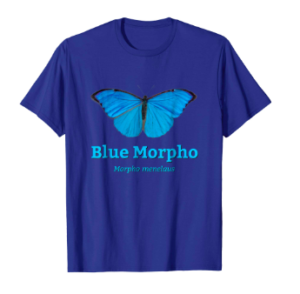The Blue Morpho butterfly is probably one of the best known and most popular worldwide. It is particularly known for its luminescent blue wings. The brilliant blue coloring is a result of the microscopic scales on the backs of their wings, which reflect light.
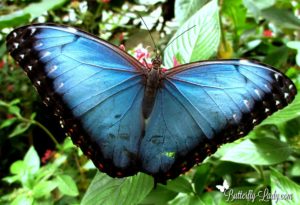
The Morpho is a highly diversified species with more than twenty subspecies. It is found from Mexico and throughout Central and South America and is endemic to Trinidad and Tobago. Located primarily in rainforests, however, the species can be found in habitats ranging from mountains, ravines, cleared lands, and streams.
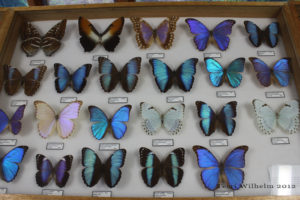
Many butterfly houses have these magnificent butterflies on display. The first encounter with a Blue Morpho was at Butterfly World in Coconut Creek, Florida. I was enchanted with their brilliant blue color and mesmerized as I watched them fly gracefully throughout the exhibit. I immediately fell in love!
The undersides of the blue morpho’s wings are dull brown, with eyespots (ocelli) and other gray, black, and red markings. The larger eyespots may help deter predators, who at first glance could think the eyes belong to a larger creature.
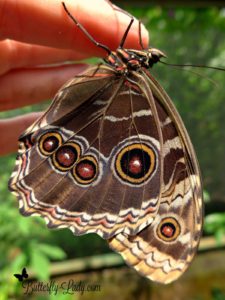
As much as I love watching these wonderful butterflies in captivity, it does not compare to seeing them in the wild. A few years ago during a trip to Costa Rica, I was walking down a road when a flicker of blue glided past me. I started to run to keep up with the butterfly. The erratic flight pattern makes it quite difficult to follow. This is on purpose because this is how they defend themselves against predators. The Blue Morpho has what is known as a “flashing” defense. When in flight, its wings appear to flash from vivid blue to dull brown. The butterfly seems to continuously disappear and reappear again, making it very hard to track through the jungle.
The Morpho butterfly does not feed on the nectar from flowers but rather feeds on the juices of fermenting fruit. I was able to lure butterflies to the garden by setting out fruit in a bird bath.
Blue Morpho butterflies are farmed raised and then the live pupae are shipped all over the world for butterfly exhibits. Many people raise these butterflies in captivity to be used for collectors in display cases. Their wings are also used to make jewelry. This can be disturbing for many people but I would like to point out that the butterflies you see in boxes or in jewelry were not snatched from the wild population, but raised on a butterfly farm for the specific purpose of being sold as what is known as “dry stock”.
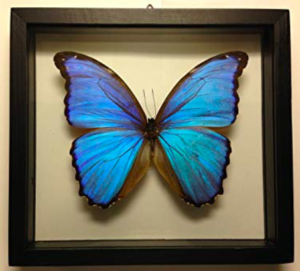
If you want to see these brilliant blue beauties you can travel to Costa Rica or your nearest tropical butterfly exhibit. You can click here to see a list of tropical butterfly houses in the United States and Canada.
Click here to see photos of the lifecycle of the Blue Morpho.
